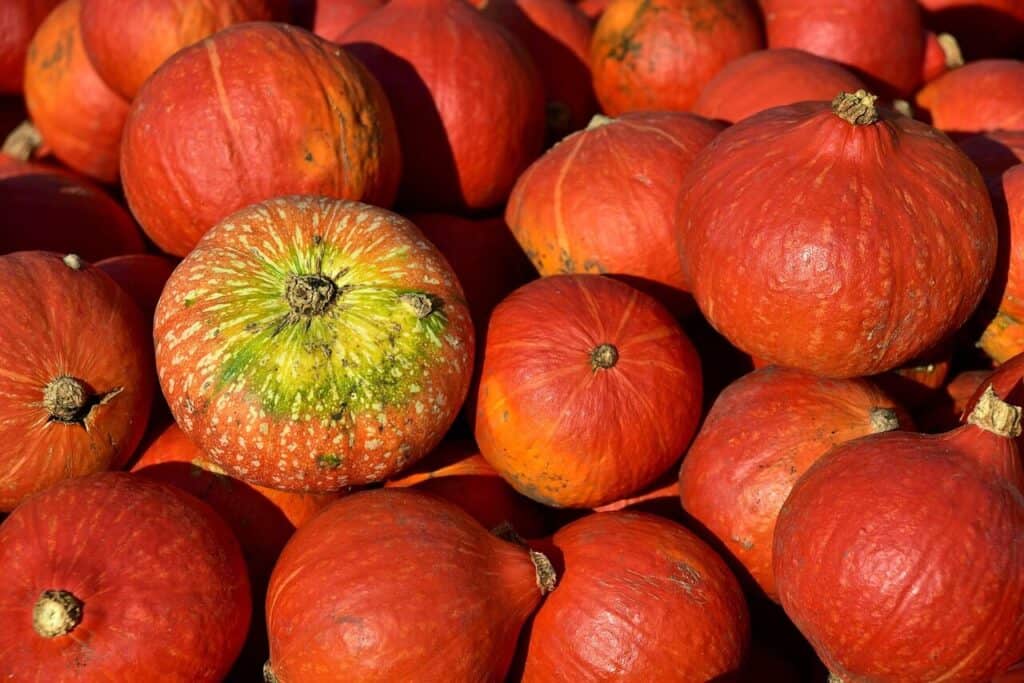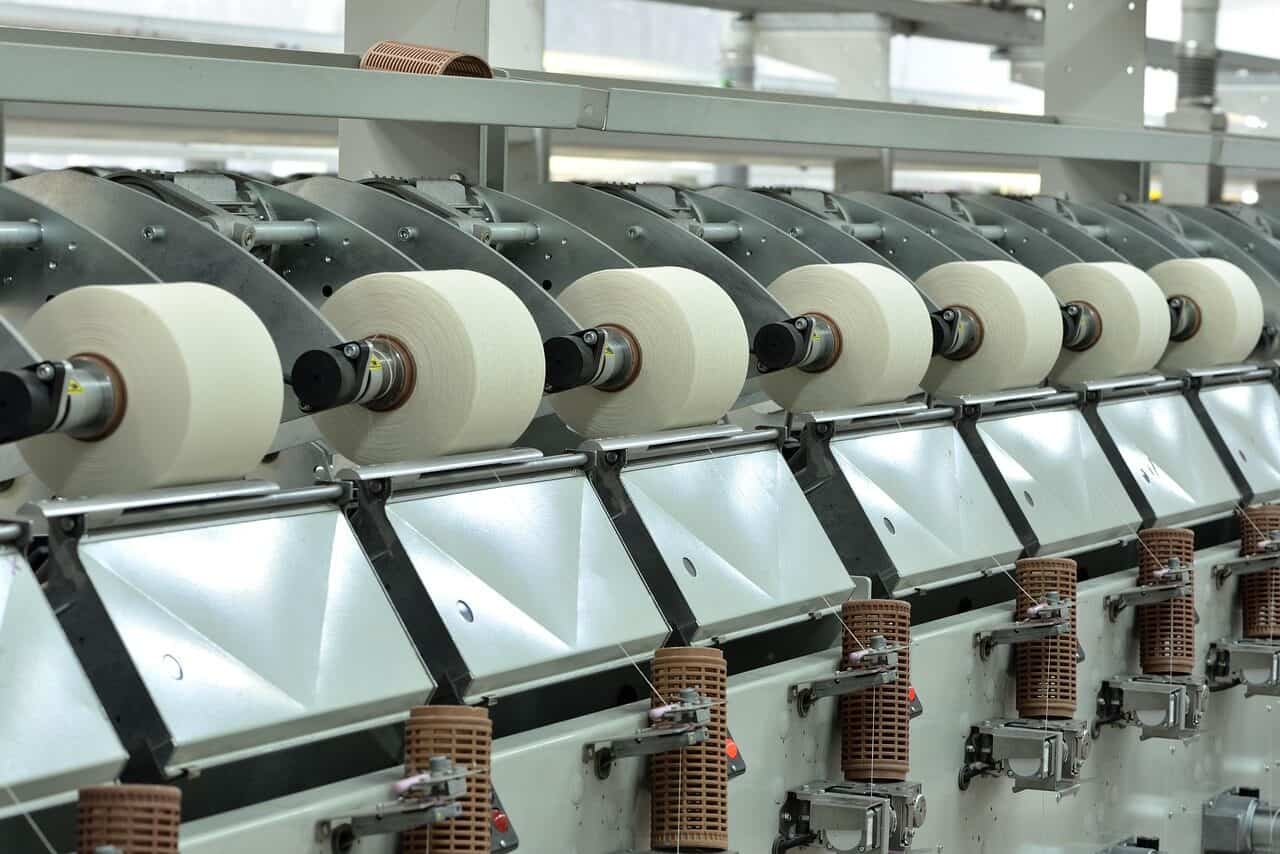The Engineer’s Guide to Precision Ingredient Dosing: A Technical Analysis
In manufacturing, precision isn’t a luxury. It’s a must-have. When you’re working with multiple ingredients, how accurate your dosing system is directly affects your final product quality, safety compliance, and profits. Just one percentage point off? You could be looking at scrapped batches, product recalls, and major financial losses.
This guide gives you a comprehensive technical analysis of ingredient dosing for process engineers and production managers. We’re going beyond surface-level descriptions. Instead, we’ll explore the
core engineering principles that make these critical systems work. Think of this as a deep, valuable resource for your operations.
Fundamental Principles: We’ll break down the physics behind volumetric and gravimetric dosing. You’ll get a first-principles understanding.
System Deep Dive: A technical look at the mechanical and electronic hardware that drives precision in modern dosing systems.
Control & Automation: We’ll master the control logic, including PID loops, that ensures repeatable accuracy.
Dosing Principles: Volumetric vs. Gravimetric
Ingredient dosing is the controlled dispensing of a predetermined quantity of material into a process. How you determine that quantity falls into two main categories: measuring by volume or measuring by mass. Understanding this fundamental difference is your first step toward mastering process control.
Volumetric Dosing Explained
Volumetric dosing dispenses a set volume of material per unit of time. The core principle? A specific mechanical displacement corresponds to a specific volume. For example, one full rotation of a screw feeder should move a consistent volume of powder.
This method operates on an indirect measurement of mass. It relies on the equation: mass = density × volume. Its accuracy is therefore critically dependent on the assumption of a consistent bulk density.
Any variable that affects the material’s bulk density will directly impact the accuracy of a volumetric system. These variables include material compaction, particle size distribution, moisture content, temperature, and overall flowability.
Volumetric systems are mechanically simpler. They generally have a lower initial cost. They work best for materials with stable, known characteristics or where minor accuracy deviations are acceptable.
Gravimetric Dosing Explained
Gravimetric dosing dispenses material based on a direct measurement of weight or mass. These systems use high-precision load cells to continuously monitor the weight of the material being dispensed.
The governing principle is Newton’s second law: Force = mass × acceleration. A load cell measures the force exerted by the material. With gravity as a constant acceleration, it calculates the mass. This direct measurement makes the system inherently more accurate than its volumetric counterpart.
A common implementation is the Loss-in-Weight (LIW) feeder. The entire system—hopper, feeder, and material—is continuously weighed. The controller adjusts the feeder’s speed to ensure the rate of weight loss precisely matches the desired feed rate, or setpoint.
Gravimetric systems are less affected by changes in bulk density. However, their accuracy can be influenced by external factors like factory floor vibration, air currents, and pressure differentials. The system’s control logic is designed to filter out much of this noise.
Core Differences Summarized
For volumetric dosing, accuracy is inferred. For gravimetric dosing, accuracy is measured. This is the central distinction. Volumetric is a measuring cup. Gravimetric is a high-precision scale. One is fast and simple, the other is precise and accountable.
A Technical Dive into Dosing Hardware
The performance of any ingredient dosing system is defined by the quality and configuration of its mechanical and electronic components. Understanding how this hardware functions is essential for system specification, evaluation, and maintenance.
Gravimetric Dosing Components
Gravimetric systems integrate weighing technology directly with
material handling components to achieve high accuracy.
Load Cells
The load cell is the heart of a gravimetric system. Most industrial load cells use strain gauge technology. A precisely machined metal element deforms under load. This causes a change in the electrical resistance of attached strain gauges. This change is converted into a calibrated weight signal.
Different types are used for specific applications. Single-point load cells are common in smaller feeders. More robust bending beam or shear beam load cells are used for larger hoppers and vessels.
The quality of these components is critical. Look for certifications from bodies like the OIML (International Organization of Legal Metrology) or NTEP (National Type Evaluation Program). An OIML C3 class load cell offers a standard level of accuracy. A C6 class load cell provides significantly higher precision for demanding pharmaceutical or high-value ingredient applications.
Hoppers and Agitators
The hopper’s role is to provide an uninterrupted, consistent flow of material to the feeding mechanism. Poor hopper design is a primary cause of dosing problems.
Issues like bridging (where material forms a solid arch over the outlet) and rat-holing (where material flows only through a narrow channel in the center) disrupt feed consistency.
To combat this, hoppers are often equipped with mechanical agitators or flow-aid devices. A slowly turning paddle or a flexible wall massage system can gently disturb the material. This breaks up cohesive bonds and ensures it flows reliably into the feeder.
Loss-in-Weight Feeding Mechanisms
The feeder dispenses the material from the hopper. The choice of feeder depends entirely on the material’s characteristics.
Screw feeders (augurs) are the most common for powders and granules. Twin screw designs offer more positive displacement and are better for cohesive or difficult-to-handle powders.
Vibratory trays are ideal for gentle handling of friable or abrasive materials. They use electromagnetic vibration to “bounce” material forward along a tray at a controlled rate.
Rotary valves are used to dispense material from a larger silo while maintaining a pressure seal. This is crucial in pneumatic conveying systems.
Volumetric Dosing Components
Volumetric systems rely on the precision of the mechanical device to displace a consistent volume.
Augers and Screw Feeders
In a volumetric context, the screw feeder’s precision is paramount. The design of the screw’s flight and pitch determines its displacement per revolution.
The motor driving the screw is equally important. A simple AC motor with a variable frequency drive (VFD) may suffice for some applications. But a stepper or servo motor provides much more precise rotational control, leading to better dosing accuracy.
Pumps for Liquids
For liquid ingredient dosing, pumps are the primary volumetric device.
Diaphragm pumps use a reciprocating diaphragm to create suction and discharge strokes. They are versatile and can handle a range of viscosities.
Peristaltic pumps use rollers to squeeze a flexible tube, pushing the liquid through. This gentle action is ideal for shear-sensitive liquids or hygienic applications, as the fluid only contacts the tube.
Piston pumps offer very high precision by displacing a fixed volume with each stroke of a piston. They are excellent for low-viscosity, non-particulate liquids where accuracy is key.
Rotary Airlock Valves
Rotary valves are often used for volumetric dosing of free-flowing powders and pellets from a hopper or silo. The pockets between the rotor vanes fill with material at the inlet and discharge it at the outlet.
The volume dispensed per revolution is fixed by the geometry of the rotor pockets. The speed of the rotor’s rotation directly controls the dosing rate.
Selecting the Optimal Dosing System
The “best” dosing system doesn’t exist in a vacuum. It’s always a function of the application. Selecting the optimal technology requires a systematic analysis of the ingredient, the process, and operational constraints. A decision framework is the most effective tool for this critical engineering choice.
Critères de sélection clés
The decision hinges on three core areas. An honest assessment of each will guide you to the most appropriate and cost-effective solution.
First, consider the ingredient characteristics. The material’s value is often the primary driver. High-cost ingredients like active pharmaceutical ingredients (APIs), potent additives, or expensive pigments demand the accountability of gravimetric dosing to minimize waste. Flowability, cohesiveness, particle size, and viscosity also dictate which mechanical feeding systems will even be viable.
Next are the process requirements. What level of accuracy and repeatability is truly needed to ensure final product quality? A specification of ±0.5% almost always necessitates a gravimetric system. Throughput, or the required feed rate, is another factor. So is whether the process is batch-based or continuous.
Finally, evaluate the operational factors. The initial capital budget is a significant constraint. Volumetric systems are less expensive upfront. However, a total cost of ownership analysis should include potential waste from inaccuracy. Also consider cleaning requirements for hygiene, available plant footprint, and the maintenance team’s skill level.
Dosing System Selection Matrix
This matrix provides a structured comparison to aid in the decision-making process. Use it as a guide to weigh the trade-offs between volumetric and gravimetric systems against your specific application needs.
Criterion | Volumetric Dosing | Gravimetric Dosing (Loss-in-Weight) |
Accuracy & Repeatability | Lower (±1% to 5%). Highly dependent on material density and flow consistency. | Highest (±0.1% to 0.5%). Direct mass measurement compensates for density variations. |
Initial Capital Cost | Lower. Simpler mechanics and fewer high-precision components. | Higher. Requires high-precision load cells and more complex controllers. |
Material Handling | Good for free-flowing, non-compressible materials. Struggles with cohesive powders or varying densities. | Excellent. Handles a wide range of materials, including difficult powders, by verifying mass flow. |
Calibration & Control | Requires frequent calibration if material properties change. Simpler control logic. | Self-calibrating to an extent. More complex control (PID loops) to maintain feed rate. |
Débit | Can achieve very high throughput rates in certain applications (e.g., liquid filling). | Throughput can be limited by the speed of the control loop and feeder mechanics. |
Best Use Case | Low-cost bulk ingredients where minor variations are acceptable. Fast-filling liquid applications. | High-value ingredients (APIs, pigments), critical formulations, applications requiring auditable records. |
For example, when dosing a low-cost, free-flowing excipient like salt into a large food batch, a volumetric screw feeder may provide perfectly adequate accuracy at a low cost.
Conversely, for dosing a high-potency colorant into a plastic masterbatch, where even a 0.5% variation is visible in the final product, a loss-in-weight gravimetric feeder is the only reliable choice. The higher initial cost is easily justified by eliminating off-spec products.
Calibration, Control, and Automation
The hardware provides the capability for precision. But the control system is the brain that delivers it. Understanding calibration and control logic is what separates an operator from a true process expert.
The Critical Role of Calibration
Calibration is the process of establishing a known, accurate relationship between the system’s measurement and a true value. Without proper calibration, all other efforts are meaningless.
Static calibration involves zeroing the scale (or tare weight) and then verifying its response against certified, traceable weights. This ensures the load cell and electronics are reporting mass correctly under no-flow conditions.
Dynamic calibration, or a material test, verifies the actual output of the system. The feeder is run for a set time, and the collected material is weighed on a separate, high-precision scale. This confirms the entire system—mechanics and controls—is delivering the correct amount.
Understanding the Control Loop
In a loss-in-weight system, the controller operates on a continuous feedback loop. Its goal? Make the actual rate of weight loss (the Process Variable) match the operator’s desired feed rate (the Setpoint).
The controller constantly calculates the difference between the setpoint and the process variable. This difference is called the error.
Based on this error, the controller sends a new output signal to the feeder’s motor. It speeds it up or slows it down to correct the deviation. The logic used to calculate this correction is typically a PID control algorithm.
PID Controller Tuning
PID (Proportional-Integral-Derivative) control is the industry standard for tuning feedback loops. Each term in the algorithm serves a unique function in achieving a fast, stable response. A poorly tuned loop will result in dosing inaccuracy, either by oscillating around the setpoint or by responding too slowly to changes.
Understanding how to tune these parameters is a high-value skill for any process engineer.
Paramètres | Function in Dosing | Effect of Increasing Value | Tuning Tip for Dosing |
Proportional (P) | Reacts to the current error between the desired feed rate and the actual feed rate. | Faster response to errors, but can lead to oscillation (overshooting and undershooting). | Increase for a more aggressive response. Reduce if the feed rate is unstable and oscillating around the setpoint. |
Integral (I) | Corrects for past (accumulated) error over time. Eliminates steady-state error. | Eliminates long-term drift from the setpoint, but can cause overshoot if set too high. | Increase to correct a feed rate that is consistently above or below the target. Reduce if it causes slow, large overshoots. |
Derivative (D) | Predicts future error by reacting to the rate of change of the error. Dampens oscillation. | Reduces overshoot and settles the system faster. Can make the system sensitive to noise (vibration). | Increase to dampen the oscillations caused by a high P-gain. Often used sparingly or set to zero in noisy environments. |
Tuning a PID loop is an iterative process. The goal is to find the right balance that allows the feeder to respond quickly to setpoint changes without becoming unstable.
Advanced Troubleshooting for Inaccuracies
Even the best-designed systems can encounter problems on the factory floor. Dosing inaccuracies aren’t just failures. They’re puzzles that can be solved with a systematic, experience-based approach. The issues rarely stem from a single, obvious fault.
A common issue we encounter on the factory floor is a gradual drift in accuracy that isn’t solved by recalibration. This often points to environmental factors. We once traced a 2% dosing error in a pharmaceutical line to a new stamping press installed one bay over. The low-frequency vibration, imperceptible to humans, was interfering with the load cell readings.
Solving these problems requires looking beyond the feeder itself. You need to consider the entire system: the material, the mechanics, and the environment.
Common Symptoms and Root Causes
Grouping problems by their symptom is the most effective way to begin diagnosis.
Inconsistent batch weights are a frequent complaint. This can be caused by fluctuating material bulk density, which fools volumetric feeders. Or inconsistent flow from the hopper, which starves even a gravimetric feeder. Environmental factors like vibration or drafts can also introduce random errors.
Feeder clogging or bridging is a mechanical and material-related issue. Cohesive or sticky powders have a high internal friction and tend to arch over the feeder inlet. This is often a result of improper hopper geometry for that specific material or a lack of an appropriate flow-aid device like an agitator.
System “drift” over time, where accuracy slowly degrades, often points to more subtle causes. Temperature changes can affect load cell electronics, causing a slow drift in the zero point. Gradual material buildup on flexible connections or dust vents can “ground” the scale, causing a portion of the weight to be ignored.
Ingredient Dosing Troubleshooting Guide
This guide provides a framework for diagnosing and resolving common issues. It’s built from years of on-site experience and addresses the real-world complexities that manuals often overlook.
Symptom | Cause(s) potentielle(s) | Diagnostic Step | Recommended Solution |
Final batch weight is consistently low/high. | 1. Incorrect calibration. <br> 2. Material buildup on non-weighed parts. <br> 3. Incorrect bulk density in volumetric feeder. | 1. Perform a full static and dynamic calibration with certified weights. <br> 2. Inspect feeder discharge, flexible connections, and vents for buildup. <br> 3. Measure material bulk density and update controller settings. | 1. Recalibrate system. <br> 2. Clean all components and establish a regular cleaning schedule. <br> 3. Adjust volumetric settings or switch to gravimetric for this material. |
Dosing rate is unstable and oscillating. | 1. PID loop is poorly tuned (P-gain too high). <br> 2. Mechanical vibration (from motor or external source). <br> 3. Inconsistent material flow (bridging in hopper). | 1. Observe the controller’s output graph. Look for rapid, rhythmic fluctuations. <br> 2. Place an accelerometer or a glass of water on the scale frame to check for vibration. <br> 3. Visually inspect the hopper during operation. | 1. Reduce Proportional (P) gain and/or increase Derivative (D) gain. <br> 2. Isolate the scale from the source of vibration using dampening pads. <br> 3. Install a hopper agitator or vibrator; use a stepper motor for smoother feed. |
Feeder stops unexpectedly or alarms out. | 1. Material bridging/clogging in the hopper. <br> 2. Motor overload. <br> 3. Refill system not working (for LIW). | 1. Check material level and flow in the hopper. <br> 2. Check motor temperature and controller error logs. <br> 3. Verify the level sensor and refill mechanism (e.g., slide gate) are functioning. | 1. Employ flow-aid devices (agitator, fluidizer). Change hopper geometry if possible. <br> 2. Ensure feeder is not oversized for the material; check for foreign objects. <br> 3. Repair or adjust the automated refill system. |
Accuracy degrades during a long run. | 1. Temperature effects on load cells. <br> 2. Material properties changing (e.g., absorbing moisture). <br> 3. Gradual buildup on the feeder screw or outlet. | 1. Monitor system weight when empty and at a stable temperature, then re-check after a long run. <br> 2. Take material samples at the beginning and end of the run and test for density/moisture. <br> 3. Disassemble and inspect the feeder after a problematic run. | 1. Use temperature-compensated load cells or insulate the weighing module. <br> 2. Store material in a climate-controlled area; consider blanketing the hopper with dry nitrogen. <br> 3. Select a different screw profile or coating; adjust cleaning schedule. |
Conclusion: Achieving Dosing Excellence
Achieving precision in ingredient dosing isn’t a matter of chance. It’s the direct result of a systematic engineering approach applied with diligence and expertise. We’ve journeyed from the fundamental physics of dosing, through the hardware selection process, into the intelligence of the control system, and finally to the practical reality of troubleshooting.
Excellence in this field is built upon these pillars: a first-principles understanding of the technology, a rigorous methodology for system selection, a mastery of the control logic, and an experienced-based approach to problem-solving. By embracing this technical and analytical mindset, you’re empowered to move beyond simply operating equipment to truly engineering a process that delivers quality, efficiency, and profitability.










